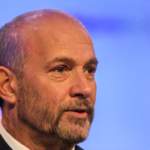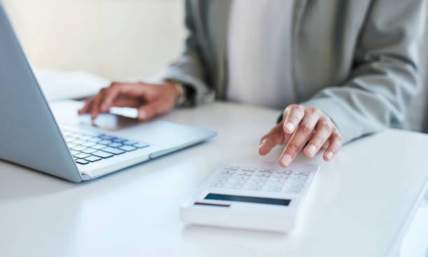Steps To Create An Employee Development Plan
Employee retention and engagement are more important than ever, and that won't change anytime soon. Finding new employees costs employers roughly six to nine months of salary in recruiting, training, and coverage costs. So replacing someone who has $50,000 a year on their paystub could cost you $25,000 to $37,500.
That's where a career development plan comes in. With professional development plans, you need to continuously offer your employees opportunities to grow and develop inside their roles and your company as a whole. Then you need to keep your employees engaged in their job, especially since the average employee will stay at their current job for only four years.
Effective employee development plans keep your best workers engaged and willing to stay within the company and grow with your strategic needs. So, what is an employee development plan, how does it benefit the business, and how do you create one?
Also read: What Are 8 Ways To Increase Employee Loyalty?
- What is an Employee Development Plan?
- Types of Employee Development Plans
- 1. Training Needs Analysis
- 2. Identify Ideal Employees for Management Positions
- 3. Align Employee and Company Goals
- 4. Help Employees Grow Towards Future Goals
- 5. Use Employee Development Plan Templates
- 6. Fit the Learning to the Training
- 7. Gather Data, Track Results, Make Informed Decisions
- 8. Continue to Learn, Adapt, and Grow
- Benefits of Creating an Employee Development Plan
- The Secret to Successful Employees
- Wrapping Up

What is an Employee Development Plan?
When you boil it down, an employee development plan is a way to improve the quality and efficiency of an employees' work by learning new skills and improving existing ones. You motivate them to do better by allowing them to learn more through employee development.
The thing that a lot of companies get wrong is that it isn't one-size-fits-all. Each employee development plan depends on tailoring it to the company and the individual employee. So you have to be very specific about training needs, what they're passionate about or interested in learning to see the growth you want.
When you think of development, you might think of climbing the ladder or moving up in the ranks. If that employee makes an excellent managerial candidate, then go for it, but employees can also expand and learn laterally rather than vertically.
Also read: Promoting A Culture Of Accountability At Workplace - How Can Businesses Achieve It?

Types of Employee Development Plans
There are many different ways to implement an employee development plan, whether learning specific software that's more role-specific or doing a more broad category like communication or leadership skills.
However, looking at some of the more popular employee development plans is an excellent way to finding something that works for you and your employee growth. For example, take this study that interviewed 38,000 people to find just what they wanted out of their employee development plans.
32% wanted leadership training and development while 30% wanted professional certifications, and 17% wanted a greater emphasis on technical skills. The bottom three were employer-subsidized degrees and learning at 7%, public speaking training at 4%, and diversity training at 2%.
You need to find a middle ground and guide your employees through the career development plan you make for them. Many who want a leadership role might not fully understand the communication skills they need to do their job effectively or how diversity training plays a part in being a leader.
After that, you need to measure the success of your plan and which one fits better with your workplace culture. There are four types of strategies you can use:
- Performance-based plan: Put your employee development plans to work by setting a goal for the quarter and reward their performance based on how close they got to the goal. It would also help to consider professional growth, motivation, and the hard work they put in.
- Management by objectives: This is similar to the performance-based plan but focuses more on shorter-term goals set by the employees rather than the employer. Managing by objectives allows employees to continuously change their goals while self-evaluating how well they're doing.
- Succession planning: This longer-term, professional development plans focus on career growth and getting promotions. It's also a great way to insert mentorship into a company by allowing those with more wisdom to teach others things.
- Ad-hoc improvement: This is an informal plan that's super personalized and centered on mentorship or coaching. It's great for individuals wanting to learn more about the company and how things are run.

Now that you know why creating an employee development plan is so important, here are eight steps to create an employee development program for your workers:
1. Training Needs Analysis
First things first, deciding the direction you want your company to go. What are your primary business goals? What challenges or opportunities might be coming up in the near future? How would you shape and strengthen your employees? What are your development needs for the company?
Then, figuring out what skills need improving, of upskilling. Analyzing your employees' current skills shows you what skills your employees don't have or need more development. This determines what training employees need. It also helps you figure out who needs training time first. Your workers power your business, so supporting, motivating, and inspiring them is imperative.
This analysis puts your business goals at the center of it all for future growth, streamlining the process for the most bang for your buck and the start of an individual development plan.
You do this by:
- Deciding what you're trying to achieve for your own organization
- Identify skills, knowledge, and abilities your talented employees need to meet your objective
- Using questionnaires, assessments, and observation to see what your worker already knows.
- Ask your employees what they need to know to be better at their job and what they'd like to learn.
- Talk to your managers about what needs improving
- Use those relevant data points to align with your objective
- Figure out your current training resources
- Match your training to your needs
Also read: 10 Employee Incentive Programs That Will Massively Engage Your Team

2. Identify Ideal Employees for Management Positions
Now it's time for employee development opportunities to arise. Find those workers with leadership abilities, a drive to learn, are always looking for growth, and go out of their way to be team players.
These promotable employees are the ideal candidates for professional development opportunities, special projects, and implementing the training program initially, which helps them streamline their skills.
You'll want to look for workers that:
- Are engaged with their work
- See failure as an opportunity
- Have good communication skills, or the ability to learn them
- Actively listen to others
- Motivate others to be more successful
- Don't need validation or showing off for attention
- Are effective multitaskers
- Seek out learning opportunities
- Show initiative
- Prioritize the future needs of your company
3. Align Employee and Company Goals
Make sure that the path your chosen employees want to take aligns with your company's major goals. The employee development plan is a great start, but it won't go anywhere if the employees themselves don't want to learn. So get them excited by having your employees plan how far they want to go and what career paths they want to take.
Help strengthen the desire to stay within the company by considering specific career goals obtained within your organization. The best way to learn everything you can is through discussion and active listening. It's also a great way to know what and how your employees want to learn.
An easy way to help with alignment is by sharing your story, mission statement, and goals for the company. Everyone loves a good story and knowing they're making an impact on the business will help motivate them and keep them focused.
Another way to help with alignment is to be crystal clear on your expectations for them as workers and the type of office culture you want. Be persistent and make sure that they are aware of company goals and their tasks. It helps everyone be on the same page.
Also read: How to Create an Employee Compensation Plan that is Effective
4. Help Employees Grow Towards Future Goals
Think ahead. Where do you want your company to be in five or ten years? What will it take to have your current employees grow with you and be what you need in that timeframe?
Your training shouldn't be just for the present iteration of your company. Still, it should also prepare them for future goals, ensuring their career development plans align with your company and its career aspirations.
You can help encourage them to continue learning by:
- Giving recognition
- Rewarding them for learning and growth
- Continue focusing on growing and learning skills
- Give them more responsibility

5. Use Employee Development Plan Templates
With so many successful companies out there with solid employee development plans, you don't need to search hard to find a business case that works for your company. Instead, use a quick Google search and have plenty of online resources and online learning at your fingertips.
Suppose you're in the beginning stages of your organization. In that case, personal and individualized templates are perfect for your employee development plans since you don't have many employees and can work more one on one with them.
When it comes to significant growth and many changes, a succession plan template works since it's all about looking to your company's future.
A mentor plan template works if you're an established business looking to have senior employees work with junior ones. Seasoned colleagues will provide guidance and wisdom while junior employees can sidestep beginner mistakes.
6. Fit the Learning to the Training
Not all training is equal, and learning different skill sets requires different methods of training. For example, leadership or communication skills are better with undivided attention.
Whether you go for mentoring programs, coaching, job shadowing, on-the-job training, pull from other departments for cross-training, the expanded skill set must fit into the type of training you plan to use for an employee.
No matter which you choose, make sure you're giving your workers enough time in the day to learn effectively. You need to budget time for learning. If your team members are under heavy time constraints already, they're not going to put in the extra effort to develop new skills.

7. Gather Data, Track Results, Make Informed Decisions
Now that you have an employee development plan up and running, you can devote more attention to its efficient implementation. But, first, take some time to observe the training and make sure it's working the way you want it to for your workers to progress.
Get together with your team members regularly and check in with them and how the training is coming along. Get their feedback on the training itself, how they feel their learning needs are being met, and what more they want out of the training. If they're struggling with the training, figure out the obstacle and try to overcome it.
If you can't monitor the success of the training yourself, then hire an individual or team dedicated to ensuring your employee development plan helps your employees progress. If you don't have the budget for another full-time employee, get HR professionals to help as part of their regular duties and look over the direct reports they give you.

8. Continue to Learn, Adapt, and Grow
The final step in your own employee development plan is ongoing growth. As your company and team members grow, continue evaluating and ensuring you're on the right path. Your employees now have solid career goals with an expanded skillset, so keep going back to tweak things according to company objectives and improve training.
Also, keep soliciting feedback from your employees. Continue to listen to what they have to say and show that you appreciate their feedback. There is nothing worse than being in a job where you feel like you are not being heard and do not have a say in critical operations.
Keep your workers engaged with both management and the company because disengaged employees cost companies in the US $550 billion a year. Companies that listen to and engage their workers happen to have the best workers and get the best pick of talented applicants as their employees are more than willing to speak about their jobs highly.
If you go through all of this and find that the training isn't what you wanted or that it's not sufficient, it's okay to go back to the drawing board. Continue working on your employee development plan until you have it where you and your workers want it to be.

Benefits of Creating an Employee Development Plan
Here are some benefits of creating an employee development plan:
1. Reduce Turnover
The big thing about having high employee satisfaction is that they won't want to leave your company. In a study of 4,000 business professionals, 94% said they'd stay with the company longer if it invested in their career and helped them gain new knowledge, but the number one reason these employees feel held back is that they don't have the time to learn.
Putting in the extra investment through a professional development plan to improve employee satisfaction is a good thing since they'll stay. However, you already put time and money into recruiting and training your workers, so continuing their learning isn't that great of a jump.
A reduced turnover rate saves you more money in the long run and improves the morale and productivity of the company. In addition, it keeps your employees happier to be at work rather than wishing they were back home asleep.
2. Improving Your Business Operations
Creating an employee development plan can also help your company run smoother and more efficiently. For example, when your company develops and maintains an individualized professional development plan that works with one-on-one mentorship, everything runs faster with less time needed for onboarding and training.
Getting 70% higher productivity is difficult when your workers aren't willing or have the time to help each other out and have high employee engagement. However, a bit of time, effort, and an excellent individual employee development plan in place increase employee productivity by far.
3. Increased Profits
If you have less turnover rate and your best employee development plans in place to make your employees more productive, then obviously that's going to increase your profits. This study compared companies who spent $5,000 on employee training oportunities per year against companies who spent $1,500 per employee per year showed that no matter what you put into your employees, you get more out of them.
The lower investment companies saw over 85% additional revenue, while the higher ones saw almost 105% additional revenue. Attaining quotas also jumped, as did the win rate of companies.
So it doesn't matter how much you put into furthering your workers' skills you'll be getting something out of it.

The Secret to Successful Employees
If you want your employees to keep their current jobs, you need the secret to successful employees. That secret is the company culture. It doesn't matter if you have the most well-organized, generous development plan for employees. But, if you don't have an office culture that supports growth, it will never get anywhere.
You need a culture that focuses on being open, honest, and giving feedback without reprisals. You also want a continuous growth culture where everyone strives to continue learning and growing into the best workers and leaders they can be.
Wrapping Up
While creating employee development plans consumes both time and money, the payoff for a good plan is priceless. An effective employee development plan is a win-win situation for everyone:
- It gives the employees something to strive for while learning necessary skills and growing existing ones.
- It allows the employees to feel closer to the business and less likely to leave.
- It improves the business atmosphere, increasing the morale of workers.
Just don't forget to keep updating and refining your employee development plan as you grow and expand so you don't lose your workers with outdated and unnecessary training.















